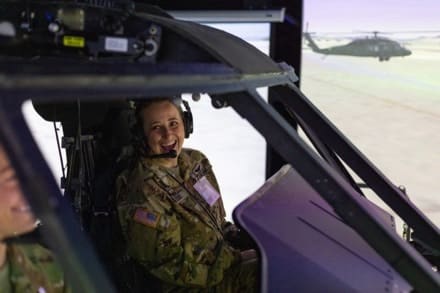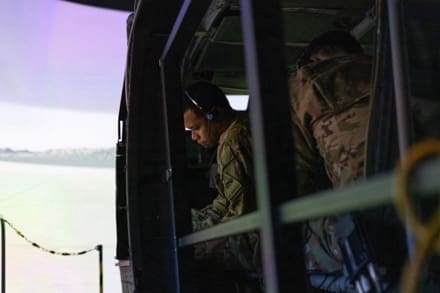
REDSTONE ARSENAL, Ala. — “No humans at first contact.” That was the goal of the APEX Lab during the Launched Effects Crew Station Working Group exercise held in April 2024.
The APEX lab — organized under the Systems, Simulation, Software, and Integration Directorate of the U.S. Army Combat Capabilities Development Command Aviation & Missile Center — hosted the exercise with support from mission partners Future Vertical Lift Cross-Functional team, Program Executive Office for Aviation and their program and product offices.
The laboratory welcomed seventeen Soldiers from across the U.S. Army to participate in the exercise. Pilots and crewmembers were selected from operational units to vet potential updates and additions to cockpit and cabin interfaces via government-developed, government-owned software. This enabled AvMC engineers to rapidly prototype some of the Soldiers’ recommendations in real time.
The Soldiers not only test launched effects prototypes in development at the lab, but to also influence — and possibly change — the Army doctrine that will accompany those effects in the future. The event was conducted using the Engineering Analysis Cockpit developed in support of the Utility Helicopter Program Office. Launched effects are drones that can be used in a multi-domain capacity — launching from air, ground, or sea for reconnaissance or target strike far ahead of the accompanying forces.
“All the data that comes from this is going to our PMs,” Jena Salvetti, lead human factors engineer for DEVCOM AvMC’s Aviation Crew Stations Branch, said. “It’s going to help inform requirements and it’s going to help inform a lot of the decisions made.”
As the subject matter experts on hand instructed the Soldiers — they are rewriting the rules.
“We need your help on what it’s going to look like,” FVL’s Chief Warrant Officer 4 Alex Drouin told the Soldiers. “That’s what we’re going to tackle this week. What do you, the users, think works? What doesn’t work? Because I can make a PowerPoint presentation that looks absolutely incredible and a great video, but if it doesn’t work for the users, we are going to fail.”

For Capt. Spencer Hudson, 3rd Battalion, 501st Aviation Regiment, who traveled from Fort Bliss, Texas, to participate, it was an opportunity to influence the equipment Soldiers use daily while also getting a first-hand look at how the engineers develop that technology.
“It is interesting to see the thought process of the developers,” Hudson said. “It builds trust when you have two sides that want to get to the same goal.”
Crew station working groups help ensure that technology is developed right on the first try. Long known as the tip of the spear on the battlefield, what launched effects will do for Army forces, Drouin said, is make that tip autonomous.
“The battlefield is drastically changing from the way we know it,” he said. “This is the future and this is where we are going.”
By Katie Davis Skelley, DEVCOM Aviation & Missile Center Public Affairs

